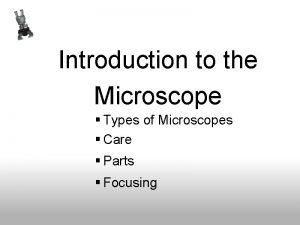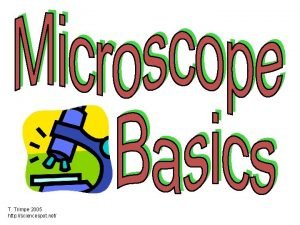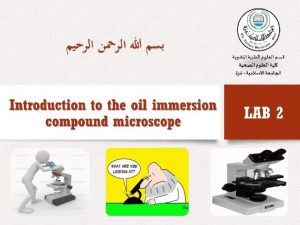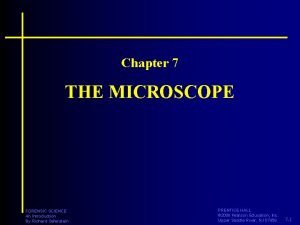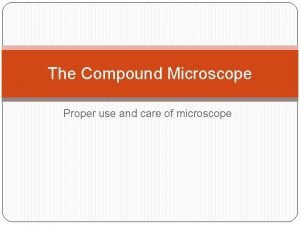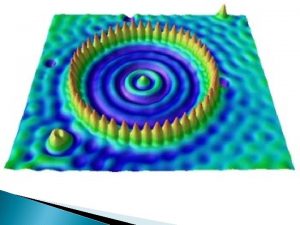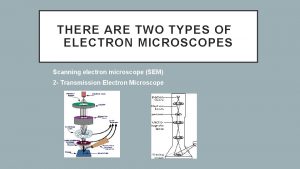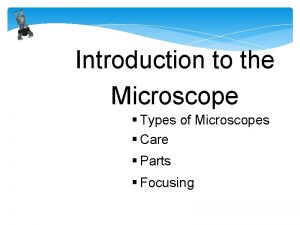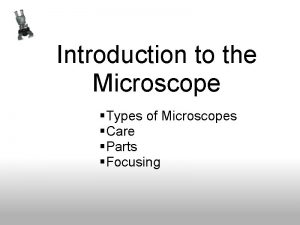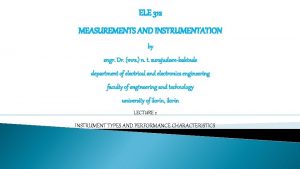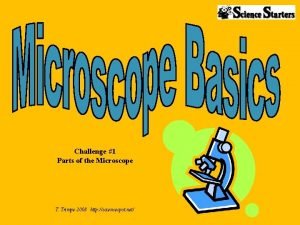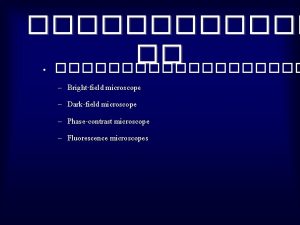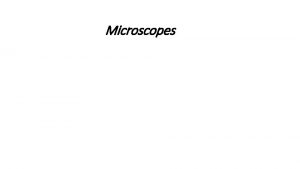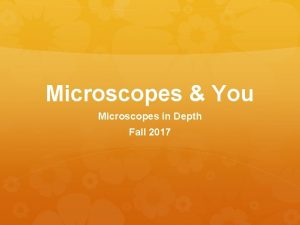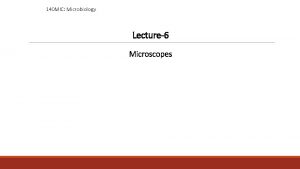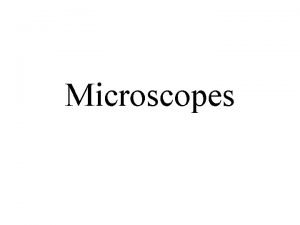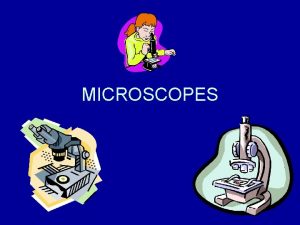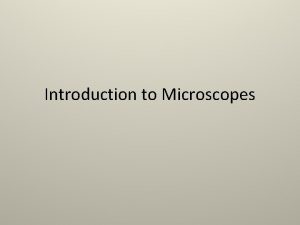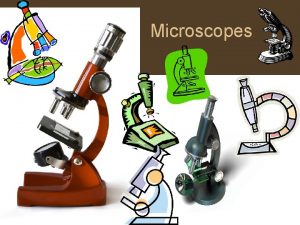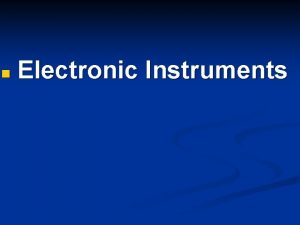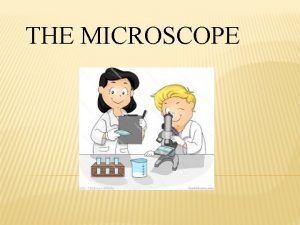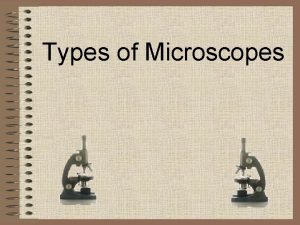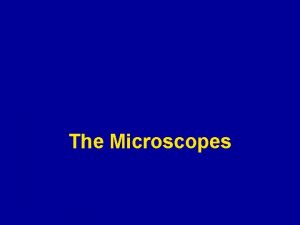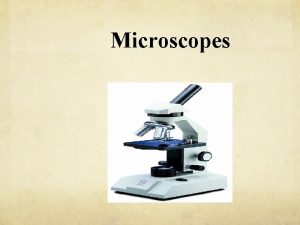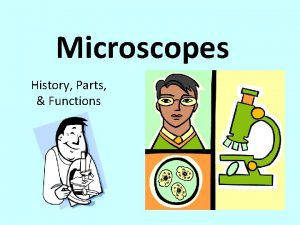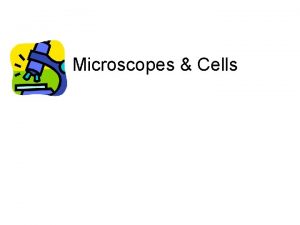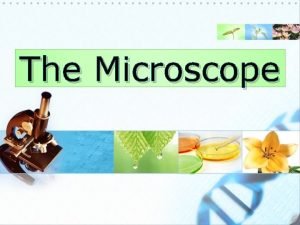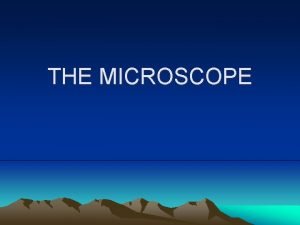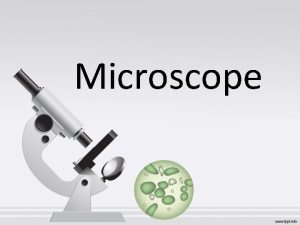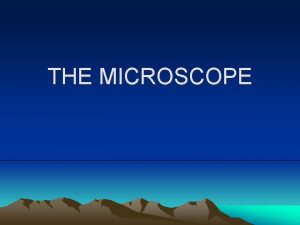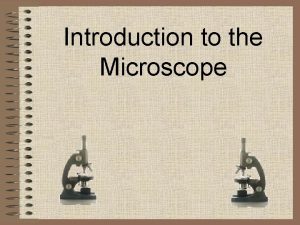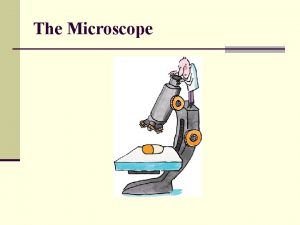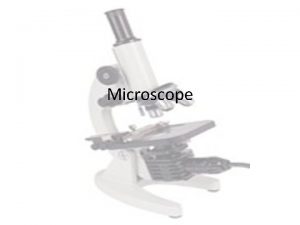The Microscope Microscope History Microscopes are instruments which

























- Slides: 25

The Microscope

Microscope History • Microscopes are instruments which produce a magnified image to help us to examine small objects and their fine details which our eye cannot see. • Microscopes range from simple devices such as a magnifying glass up to high end compound or electron microscopes.

Early Microscopes Simple Microscope Compound Microscope

Microscopes used today Compound Microscope

There are similarities in all microscopes: 1. Magnify a small object 2. Separate fine details in order to achieve a high resolution


Types of Microscopes 1. 2. 3. 4. 5. Simple Dissecting Compound Scanning Electron Microscope (SEM) Transmission Electron Microscope (TEM).

Using a Microscope to Explore the Cell • Resolution or Resolving power – The ability to distinguish between two objects that are close together High resolution Low resolution

1. Simple Microscope • Similar to a magnifying glass and has only one lens • A lens enlarges an image and bends the light toward your eye.

2. Compound light microscope • Light source: Lamp • Resolution: limited to about 0. 2 µm (micrometers) • Magnification: 2000 X • 2 D image produced • Image seen: In eyepiece • Specimen Preparation: Stain cells on a slide • Type of specimens can be used: Both


Total Magnification • To get the total magnification: Eyepiece Lens X Objective Lens = Total Magnification

Low Power = 4 x Medium Power = 10 x High Power = 40 x

3. Electron Microscope • Used to see objects that are smaller than 2µm • There are 2 types of electron microscopes: A. Transmission Electron B. Scanning Electron

A. Transmission Electron Microscope (TEM) • How it works: • • Light Source: Electrons pass through Resolution: 0. 0002 µm Magnification: 500, 000 x Type of image: 2 D Where image is seen: On a screen/ monitor Specimen preparation: Very complex Types that can be used: Dead


B. Scanning Electron Microscope (SEM) • How it works: Ø it passes a narrow beam of electrons over the surface of a specimen. Ø The specimens must be coated with a very thin film of metal, usually gold. As electrons bounce off the specimen a television screen picks up the image. • It produces a 3 -D image.


• How it works: • Light Source: Electrons pass over surface of specimen • Resolution: 0. 005 µm • Magnification: 300, 000 x • Type of image: 3 D • Where image is seen: On a screen/ monitor • Specimen preparation: Sprayed with gold • Types that can be used: Dead or alive


Mitochondria in human liver cell

TEM • Magnification: 500, 000 x • Resolution: 0. 0002 µm SEM • Magnification: 300, 000 x • Resolution: 0. 005 µm *** SEM have lower resolutions than TEM, but they have the advantage of providing 3 -D images Some specially designed SEM’s allow you to observe living specimens

1. Compound Light Microscope (pg. 20) • Consists of 2 lens • Light Source: light (passes through specimen) • Resolution: 200 nm or 0. 2µm • Magnification: 2000 x • Image produced: 2 D • Where image is seen: Eyepiece • Specimen Prep: Slicing/staining • Type of Specimen: Dead or alive

2. Transmission Electron Microscope (TEM) • Light Source: electrons (passed through specimen) • Resolution: 0. 2 nm or 0. 0002 µm • Magnification: 500, 000 x • Image produced: 2 D • Where image is seen: Projected on screen/monitor = picture! (internal study) • Specimen Prep: very complex – cross sections • Type of Specimen: Dead

3. Scanning Electron Microscope (SEM) • Light Source: electrons (passed through specimen) • Resolution: 5 nm or 0. 005 µm • Magnification: 300, 000 x • Image produced: 3 D • Where image is seen: Projected on tv screen (study surface of specimen) • Specimen Prep: Sprayed with gold coating • Type of Specimen: Dead or alive
 Mikael ferm
Mikael ferm When focusing a specimen, you should always start with the
When focusing a specimen, you should always start with the T. trimpe 2006 http://sciencespot.net/
T. trimpe 2006 http://sciencespot.net/ Microscope purpose
Microscope purpose Forensic science microscopes
Forensic science microscopes Which organelle breaks down food
Which organelle breaks down food Light microscope uses
Light microscope uses Electron microscopes main idea
Electron microscopes main idea Types of electron microscope
Types of electron microscope When focusing a specimen you should always start with the
When focusing a specimen you should always start with the Types of microscopes
Types of microscopes Null type instruments examples
Null type instruments examples Indicating instruments and instruments with a signal output
Indicating instruments and instruments with a signal output Light microscope vs electron microscope
Light microscope vs electron microscope Microscope mania compound light microscope
Microscope mania compound light microscope Hát kết hợp bộ gõ cơ thể
Hát kết hợp bộ gõ cơ thể Frameset trong html5
Frameset trong html5 Bổ thể
Bổ thể Tỉ lệ cơ thể trẻ em
Tỉ lệ cơ thể trẻ em Voi kéo gỗ như thế nào
Voi kéo gỗ như thế nào Chụp phim tư thế worms-breton
Chụp phim tư thế worms-breton Hát lên người ơi
Hát lên người ơi Các môn thể thao bắt đầu bằng tiếng đua
Các môn thể thao bắt đầu bằng tiếng đua Thế nào là hệ số cao nhất
Thế nào là hệ số cao nhất Các châu lục và đại dương trên thế giới
Các châu lục và đại dương trên thế giới Công thức tiính động năng
Công thức tiính động năng

